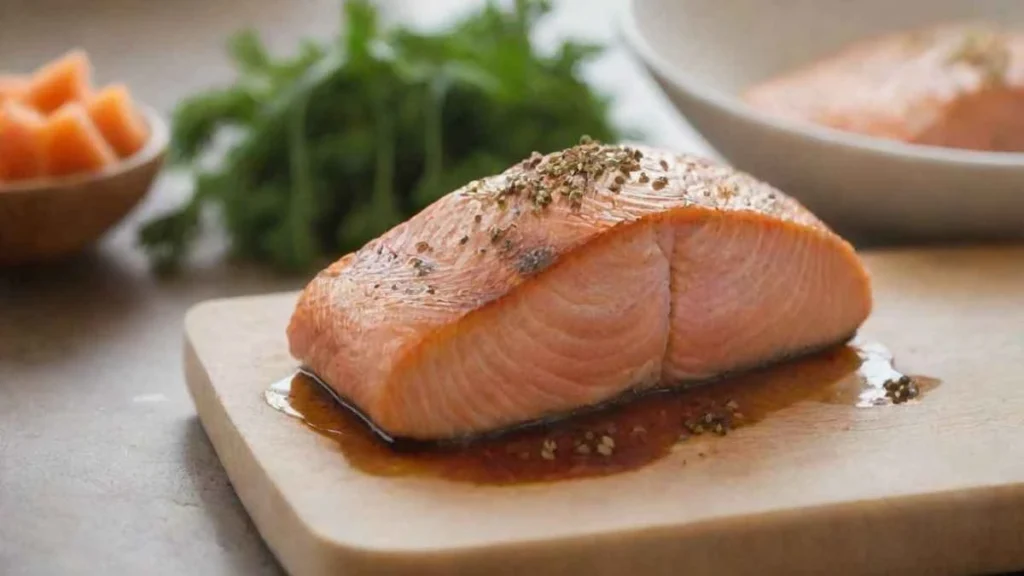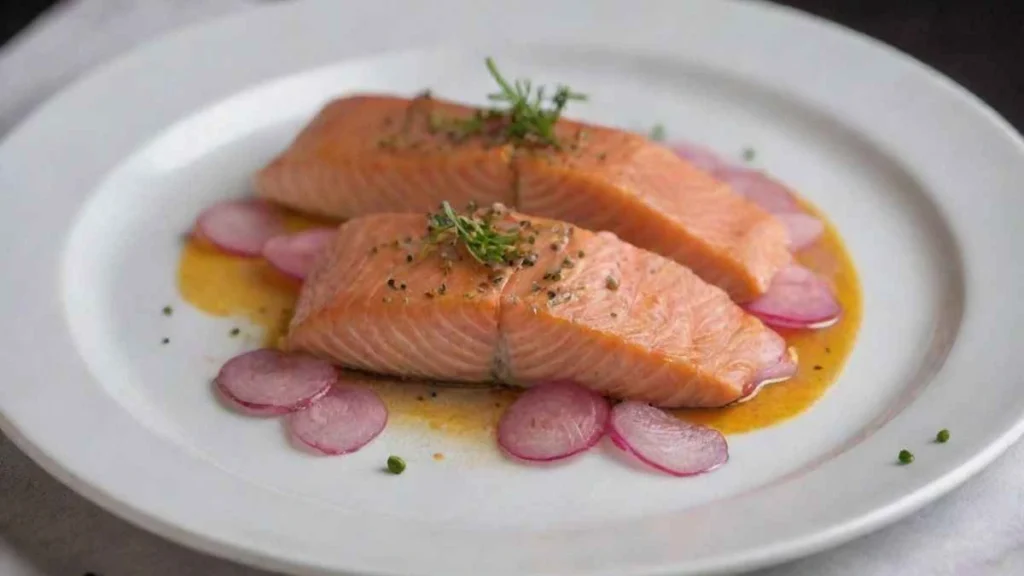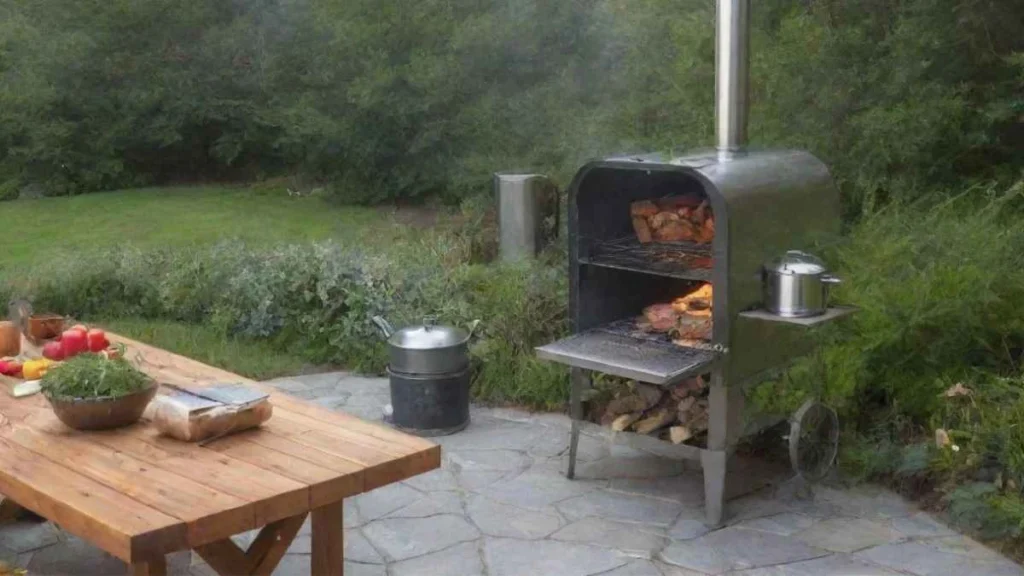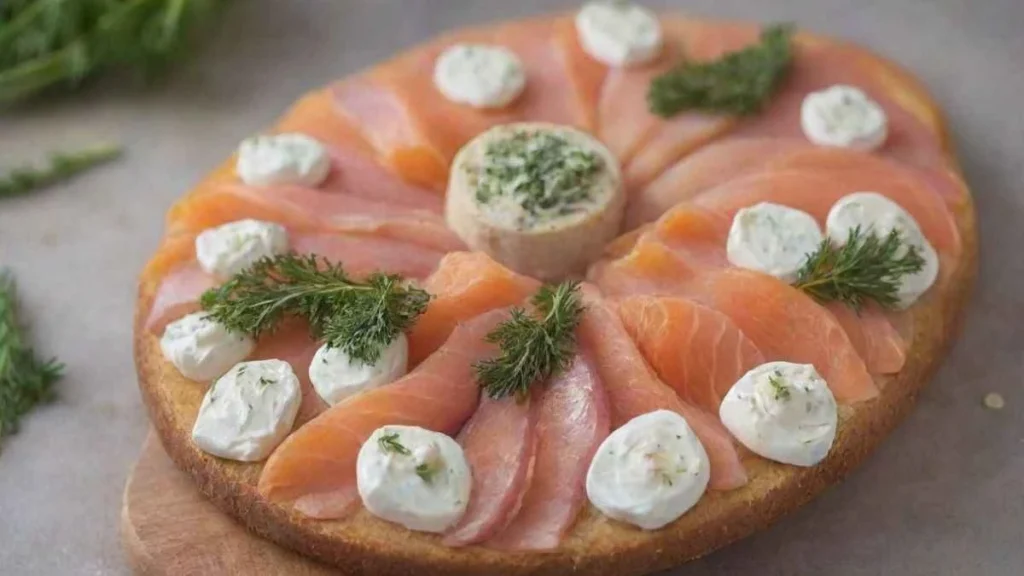Table of Contents
How to Smoke Salmon: Easy Step-by-Step Guide to Perfect Smoked Salmon
Mastering smoked salmon at home lets you create restaurant-quality results at a fraction of the cost. The perfect smoked salmon delivers a delicate balance of rich, smoky flavor and tender, flaky texture that elevates any meal. You’ll discover how simple yet rewarding this cooking technique can be with the right guidance and tools.
This comprehensive guide walks you through every step of smoking salmon, from selecting the best cuts to achieving the ideal internal temperature. You’ll learn essential techniques like dry brining, creating a pellicle, and maintaining proper smoking temperatures at 225°F. Whether you’re using a pellet smoker or a traditional smoker, these proven methods will help you create consistently excellent results every time.
Choosing the Right Salmon
Selecting the right salmon is crucial for achieving that perfect smoky flavor and tender texture in your finished dish. Your choice of salmon will significantly impact the final result, so let’s explore your options.
Wild vs. Farmed Salmon
When choosing salmon for smoking, you’ll encounter both wild-caught and farmed options. Wild salmon roam freely in natural waters, resulting in leaner meat with varying fat content. Farmed salmon, raised in controlled environments, offers consistent fat content and year-round availability. Here’s what you should understand about each one:
| Characteristic | Wild Salmon | Farmed Salmon |
|---|---|---|
| Fat Content | Leaner, varies seasonally | Higher, more consistent |
| Texture | Firmer | Buttery, smooth |
| Availability | Seasonal | Year-round |
| Cost | Generally higher | More affordable |
Best Salmon Varieties for Smoking
King (Chinook) Salmon: Your premium choice for smoking, featuring high-fat content and deep red coloring. It’s ideal for smoking but comes with a higher price tag and limited seasonal availability.
Sockeye Salmon: An excellent option combining leanness with a firm texture. It’s particularly well-suited for cold smoking and offers that distinctive red color that looks stunning when served.
Keta Salmon: Don’t let its lower price point fool you. This variety’s firm texture and strong taste make it an excellent smoking candidate. The smoking process enhances its natural flavors while maintaining its structure.
How to Select Fresh Salmon
Whether you’re choosing fresh or frozen salmon, quality indicators remain consistent. Here’s what to look for:
- The flesh should be firm and glistening, without fingerprint impressions
- Color should be vibrant and consistent
- Minimal to no fishy smell – fresh salmon should have a clean, briny scent
- No tears or discoloration in the meat
For smoking purposes, prioritize salmon with higher fat content, as it helps insulate the meat during the extended cooking process and prevents drying out. You can confidently use previously frozen salmon, as much wild salmon is frozen right on the boat to preserve freshness. Always do so gradually in your refrigerator to maintain the best texture when thawing.
Remember that “fresh” wild salmon is truly available only during the netting season, so be skeptical of “wild” labels during off-seasons. If budget is a concern, high-quality farmed salmon can produce excellent smoked results, often with more consistent outcomes due to its reliable fat content.
Preparing the Salmon
Here, I show you how to prepare the best smoked salmon; First things first. Following these essential steps will ensure your salmon is ready for the smoker and set you up for success.
Removing Pin Bones
Start with cold salmon to make pin bone removal easier, as chilled fat is firmer and less likely to tear. You’ll need specialized fishbone pliers with grooved heads for the best results. Here’s your pin bone removal process:
- Place the salmon flat, flesh-side up, on a clean surface
- Run your knife at a 45-degree angle down the center to locate bones
- Starting from the collar side, grip each bone with pliers
- Pull at a 45-degree angle toward the belly
- Rinse pliers between pulls using cold water
- Count the bones – you should find 27-29 in total
Dry Brining Process
Brining infuses flavor and moisture into your salmon while preparing it for smoking. You can choose between wet and dry brining methods, with dry brining offering easier handling and less sodium. Here’s a simple dry brine mixture:

| Ingredient | Amount |
|---|---|
| Kosher Salt | 1 cup |
| Brown Sugar | 1 cup |
| Optional Seasonings | To taste |
Spread a thin layer of the mixture in a baking pan, place salmon skin-side down, and coat thoroughly. Cover with plastic wrap and refrigerate for 6-8 hours for thin filets, or up to 12 hours for thicker cuts. Important: Don’t exceed the recommended brining time to avoid oversalting.
Creating the Pellicle
The pellicle is a shiny, tacky layer that forms on the salmon’s surface – it’s crucial for proper smoke adhesion and moisture retention. After brining:
- Wash the salmon under running water and let the water out of it and then dab it totally dry.
- Place on a cooling rack, skin-side down
- Let it dry uncovered in the refrigerator for 8-12 hours
- Alternatively, use a fan in a cool room (60°F or below) for 2-4 hours
You’ll know the pellicle has formed properly when the surface feels tacky and has a lacquer-like sheen. This step might seem time-consuming, but it’s essential for achieving that perfect smoked finish. The pellicle acts as a protective barrier, helping to seal in moisture while creating the ideal surface for smoke to adhere to during the smoking process.
Smoking Techniques
Understanding smoking techniques is the cornerstone of creating exceptional smoked salmon at home. Let’s dive into the essential methods and techniques that will help you achieve professional-quality results.
Hot Smoking vs. Cold Smoking
The temperature at which you smoke your salmon dramatically affects its final texture and flavor profile. Here’s what you need to know about each method:
Hot Smoking
- Temperature Range: 120°F and above
- Result: Flaky, fully cooked texture
- Smoking Time: 2-4 hours
- Best For: Immediate consumption, cooking applications
Cold Smoking
- Temperature Range: Below 90°F
- Result: Silky, glossy texture
- Smoking Time: 12-48 hours
- Best For: Traditional preservation, thin slicing
Choosing the Right Wood
Your wood selection significantly impacts the final flavor of your smoked salmon. Here’s a comprehensive guide to the best smoking woods:

| Wood Type | Flavor Profile | Best Used For |
|---|---|---|
| Alder | Mild, traditional | Classic Northwest style |
| Apple | Sweet, gentle | Delicate flavor balance |
| Cherry | Sweet, fruity | Enhanced color, mild smoke |
| Oak | Rich, not intense | Strong foundation |
| Maple | Subtle sweetness | Well-rounded flavor |
Temperature Control
Maintaining proper temperature control is crucial for achieving perfectly smoked salmon. Follow these steps:
- Start Low: Begin at the lowest setting (around 165°F) for the first hour
- Monitor Closely: Check internal temperature every 20 minutes
- Gradual Increase: Raise to 180°F after the first hour
- Watch for Signs: Look out for white spots (albumin) indicating potential overcooking
- Target Temperature: Aim for an internal temperature of 145°F
Pro Tip: If you notice white albumin forming but haven’t reached the target temperature, reduce your smoker temperature immediately to prevent overcooking.
Basting with Maple Syrup
Enhance your smoked salmon’s flavor and appearance with proper maple syrup basting:
- Use only pure maple syrup (avoid imitation products)
- Apply a thin layer every hour during the smoking process
- It is recommended that basting should be done after the first hour of smoking.
- Use the basting process to check for and brush away any forming albumin
- Keep the layer light to prevent excessive caramelization
Temperature Management Tips:
- Keep your smoker between 180-225°F for optimal results
- Allow 15 minutes of rest time once the internal temperature reaches 145°F
- Consider lowering the temperature if you notice excessive albumin formation
- As with any food preparation, always ensure you use a good meat thermometer to ensure accurate temperatures are taken.
Remember that smoking salmon is both an art and a science. While following these guidelines, pay attention to how your specific smoker performs and adjust accordingly. The key is maintaining consistent temperature control while allowing the wood smoke and maple syrup to work their magic.
Serving and Storing Smoked Salmon

The journey of your perfectly smoked salmon doesn’t end when it comes out of the smoker. Knowing the right temperature, cooling process, and storage methods ensures your efforts result in consistently delicious meals. Let’s explore how to handle your smoked salmon from finish to serving.
Ideal Internal Temperature
Your smoked salmon reaches its peak texture and flavor at specific internal temperatures. For optimal results:
- Pull the salmon when it reaches 120°F (49°C) for wild salmon
- For farmed salmon, aim for 125°F (52°C)
These temperatures ensure your salmon remains tender and juicy while being safe to eat. Going beyond 135°F (57°C) will result in dry, less appealing fish. Trust your thermometer rather than relying solely on visual cues.
Resting and Cooling
Proper resting is crucial for maintaining moisture and developing flavor. Here’s your post-smoke process:
- Remove salmon from the smoker
- Place on a cooling rack
- Let rest at room temperature for 1 hour
- Avoid covering during this initial cooling period
- Check that internal temperature remains above 120°F during resting
This resting period allows the smoke flavor to settle and the proteins to relax, resulting in better texture and taste.
Storage Methods
Your storage choice affects how long your smoked salmon remains fresh. Here’s a comprehensive guide:
| Storage Method | Duration | Temperature |
|---|---|---|
| Plastic Wrap | 10 days | Refrigerated |
| Vacuum Sealed | 3 weeks | Refrigerated |
| Frozen | Up to 1 year | 0°F or below |
For refrigerator storage:
- Cover very well in plastic wrap or aluminum foil
- Keep at a consistent temperature
- This should be kept in the coldest part of your refrigerator.
- Avoid exposure to air
Serving Suggestions
Transform your smoked salmon into memorable meals with these serving ideas:
Classic Preparations:
- On a bagel with cream cheese, capers, and red onions
- Mixed with homemade cream cheese as a spread
- Layered on crusty bread with sour cream and black pepper
Creative Applications:
- In tacos with pineapple tomatillo salsa
- Tossed into pasta with light tomato sauce
- Added to grain bowls with fresh vegetables
Elegant Presentations:
- On a charcuterie board with:
- Cucumber slices
- Hard-cooked eggs
- Fresh dill
- Capers
- Tomatoes
- Various cheeses
Quick Meal Ideas:
- Mixed into scrambled eggs
- Added to fresh salads
- Wrapped in spring rolls with herbs
- Incorporated into seafood stews
For the best flavor experience, serve cold-smoked salmon after letting it rest for 24 hours and slice it very thinly using a special carving knife. This waiting period allows the smoke flavors to fully develop and ensures the perfect texture.
Remember that while freezing is an option for long-term storage, the texture may change slightly. For the best experience, consume your smoked salmon within the refrigerated storage window. If you’ve vacuum-sealed portions, you’ll have the flexibility to enjoy your smoked salmon at its peak quality for up to three weeks.
FAQ:
1. What type of salmon is best for smoking?
- King (Chinook), Sockeye, and Keta salmon are all great choices. King salmon is rich and buttery, Sockeye has a firm texture and vibrant color, and Keta offers a firmer structure ideal for smoking. Each has unique qualities depending on your flavor and texture preferences.
2. Can I use frozen salmon for smoking?
- Yes, frozen salmon works well as long as it’s high-quality. Thaw it gradually in the refrigerator to maintain the texture and freshness. Many wild-caught options are flash-frozen to preserve quality.
3. It raises the question as to what distinguishes hot smoking from cold smoking?
- Hot Smoking cooks the salmon fully at temperatures above 120°F, resulting in a flaky texture, ideal for immediate use. Cold Smoking is done below 90°F, preserving a silky, raw-like texture, suitable for slicing thinly and storing for longer.
4. How do I remove pin bones from salmon?
- Use fishbone pliers or tweezers, running them along the flesh side to locate each bone. Grip and pull each bone out at a 45-degree angle to avoid tearing the flesh.
5. Why is brining important before smoking salmon?
- Brining infuses flavor and retains moisture, which prevents the salmon from drying out during the smoking process. A dry brine with kosher salt and brown sugar is typically easy to apply and manage.
6. What is a pellicle, and why do I need it for smoking?
- A pellicle is a tacky layer that forms on the surface of brined salmon, helping smoke adhere better and sealing in moisture. It’s essential for achieving the desired smoky flavor and texture.
7. What type of wood should I use for smoking salmon?
- Popular choices include Alder (mild and traditional), Apple (sweet and gentle), Cherry (sweet and enhances color), and Oak (rich and bold). Each wood provides unique flavors, so choose based on personal preference.
8. What’s the ideal internal temperature for smoked salmon?
- For the best texture, aim for an internal temperature of 120°F for wild salmon and 125°F for farmed. This ensures tenderness without overcooking.
9. Why does white albumin form on the surface of my smoked salmon?
- Albumin is a protein that can appear when salmon is overcooked. To prevent it, start smoking at a low temperature, and monitor internal heat closely. Lower the temperature if you see albumin forming.
10. How should I store smoked salmon?
- For short-term storage, wrap tightly in plastic and refrigerate for up to 10 days. For longer storage, vacuum-seal and freeze for up to one year. Proper storage prevents moisture loss and keeps it fresh longer.
11. How can I serve smoked salmon?
- Smoked salmon is versatile and can be served on bagels, in pasta, on grain bowls, or a charcuterie board with cheeses, capers, and fresh veggies. It can also be added to scrambled eggs, salads, or tacos for quick meals.
12. Can I use a pellet smoker for smoking salmon?
- Yes, pellet smokers work well for salmon. Just monitor the temperature closely to stay between 180°F and 225°F and adjust your settings as needed for a consistent smoking experience.

Conclusion
Smoking salmon at home combines precise techniques with rewarding results. Careful preparation and smoking transform fresh fish into a delicacy. Each step builds upon the last—from selecting premium salmon and creating the essential pellicle to maintaining ideal smoking temperatures and proper storage methods. These techniques work together to produce smoked salmon with the perfect balance of rich flavor, tender texture, and professional-quality appearance.
Success in smoking salmon comes from understanding and respecting each process phase, rather than rushing toward the final product. Armed with this knowledge of proper preparation, smoking techniques, and storage methods, you can consistently create exceptional smoked salmon that rivals specialty seafood shops. The satisfaction of mastering this time-honored cooking method extends beyond the immediate reward of delicious food, offering a valuable skill that enhances your culinary repertoire.







2 thoughts on “How to Smoke Salmon: Easy Step-by-Step Guide to Perfect Smoked Salmon”
Comments are closed.